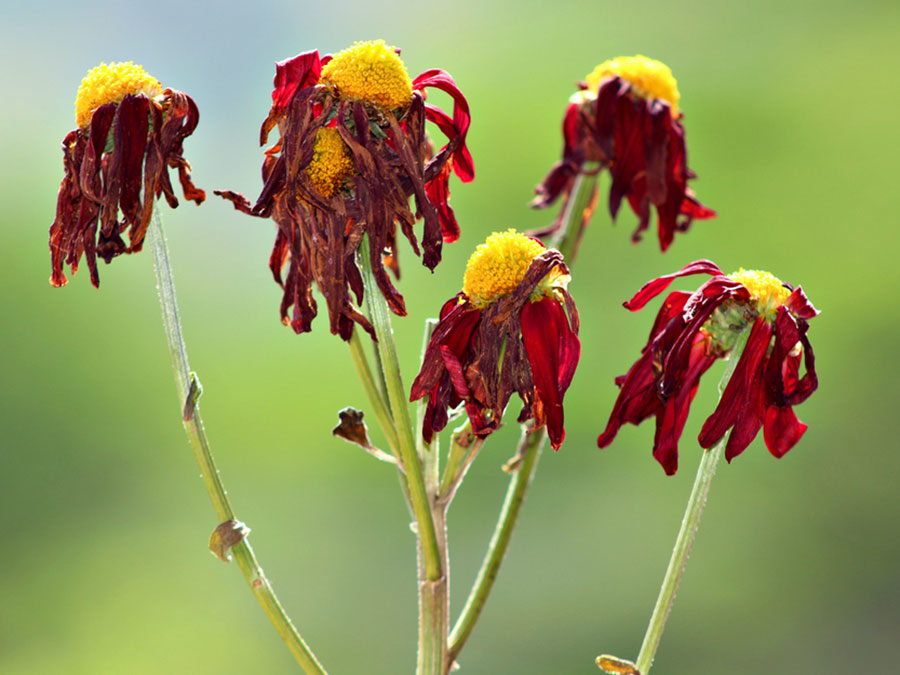If you’re not sure how much to water the various living areas of your yard on any given day (almost), check out the When to Water page of our website.
According to Tom Skilling and the WGN-TV weather gang, we just hit another weather-related record: a late-season, seven-day string of 92-plus-degree weather. This is 20 degrees above normal, and they’ve been keeping track for 147 years now.
Since August 1st, only 2.8 inches of rain have fallen. We normally receive 7.6 inches of rain. All this sun, heat and lack of rain means we are officially in an “Abnormally Dry” drought, according to NOAA (National Oceanic and Atmospheric Administration.)
And next week will NOT BE any cooler, cloudier or rainier.
Should you water? Yes, you should water!!!
Our Watering Advice
All plants are showing signs of drought stress: lawns are brown, trees are quickly dropping leaves, perennials are wilting. Our watering advice is as follows:
Lawns—brown lawns are in a drought-induced dormancy. Turfgrasses can typically survive dormancy periods of four to five weeks. But, with temperatures above 80°F, survival is greatly reduced after three to four weeks. Time to water.
Most Bluegrass turfgrasses need 1 to 1.75 inches of water per week to stay green. If your goal is to provide just enough water to get through the drought and into winter dormancy, you can water 0.25 inches of water per week.
Thus, provide between 0.25 and 1.00 inch of water per week, all during one watering session. Once you commit to watering, you should not let up until the rains return or the temperatures drop below 50°F.
Newly Planted Trees and Shrubs—these include anything planted this year after June 1st. They are in need of the most attention because they are trying to get established after being ripped out of the ground five to eight months ago. Deep watering is essential because if you moisten only the top few inches of soil, the roots will grow upward in search of water!
We always say, “visualize the rootball” and provide a deep watering at least once per week. In most cases, that means laying a hose with low flowing water that avoids runoff and reaches depths of 18 to 28 inches. Gator bags are also very effective—when regularly refilled.
Newly Planted and Existing Perennials—monitor these plants for severe wilting and water immediately. These plants are nearing the end of their annual life cycle and will most likely be in self-defense mode, going to seed and going dormant. However, the root systems continue to need moisture for proper biological function and—incidentally—growing deeper roots to become more drought resistant.
Provide enough water to thoroughly soak the soil to a depth of 6 inches. Avoid shallow watering or roots will grow upward or become shallow and less drought resistant.
Email or Contact Us if this was helpful or if you have any specific watering questions.


